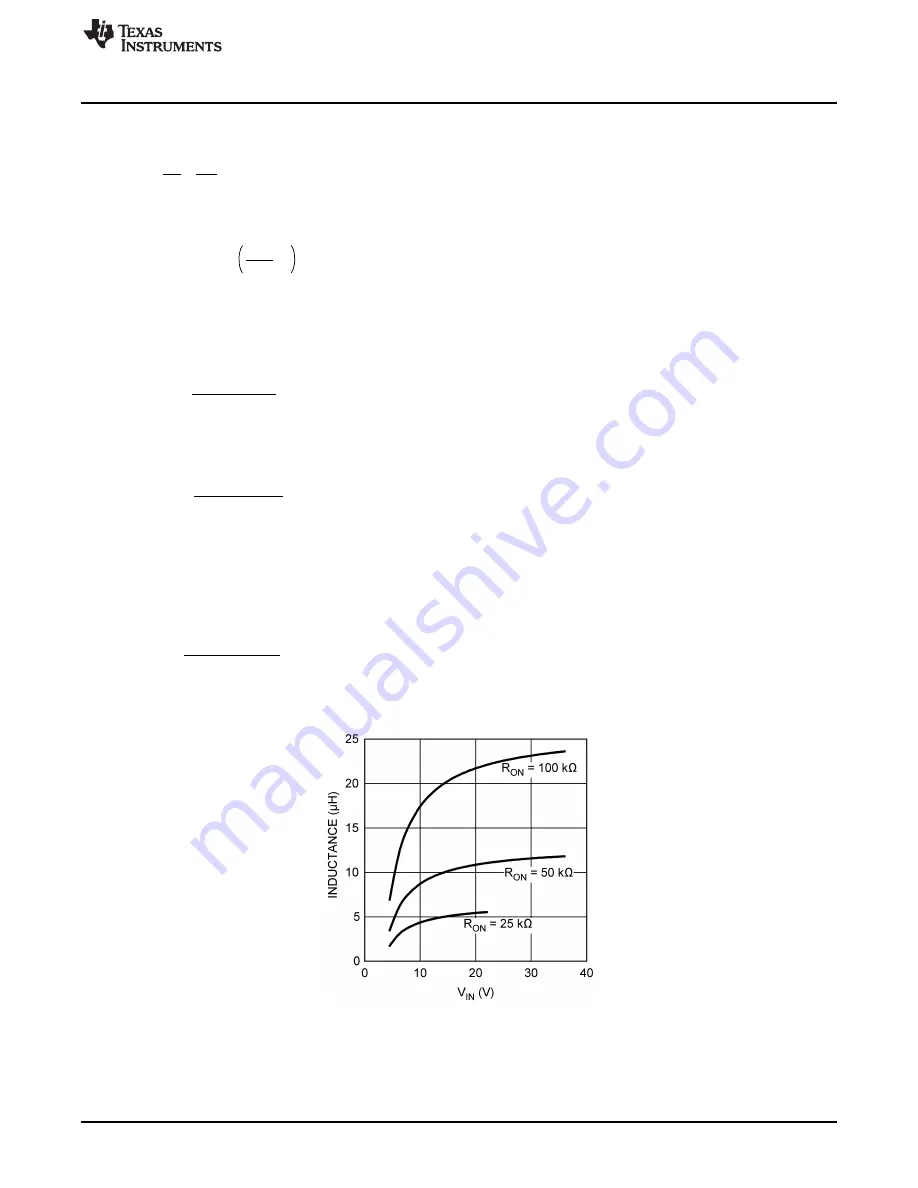
V
OUT
x (V
IN
- V
OUT
)
I
LR
x f
SW
x V
IN
L =
R1
t
1.3 x 10
-10
V
IN(MAX)
x 150 ns
V
OUT
1.3 x 10
-10
x f
SW
R1 =
R3 = 2.21 k
:
- 1
V
OUT
0.8
= 6.91 k
:
=
V
OUT
0.8
R3
R4
- 1
www.ti.com
Design Procedure
Step 1: Calculate the feedback resistors
The ratio of the feedback resistors can be calculated from the following equation:
(1)
As a general practice, R3 and R4 should be chosen from standard 1% resistor values in the range of
1.0 k
Ω
to 10 k
Ω
satisfying the above ratio. Now, select R4 = 2.21 k
Ω
, with V
OUT
= 3.3V,
(2)
Step 2: Calculate the on-time setting resistor
The switching frequency f
SW
of the demonstration board is affected by the on-time t
on
of the LM3102, which
is determined by R1. If f
SW
and V
OUT
are determined, R1 can be calculated as follows:
(3)
For this demonstration board design, V
OUT
= 3.3V and f
SW
= 500 kHz are chosen. As a result,
R1 = 50.8 k
Ω
. To ensure that the on-time is larger than the minimum limit, which is 150 ns, the value of
R1 must satisfy the following equation:
(4)
Now the maximum V
IN
is 42V, the calculated R1 satisfies
Equation 4
.
Step 3: Determine the inductance
The main parameter affected by the inductor is the amplitude of the inductor current ripple I
LR
. Once I
LR
is
selected, L can be determined by:
(5)
For this demonstration board design, I
LR
= 0.5A is selected. Now V
IN
= 18V, V
OUT
= 3.3V, and
f
SW
= 500 kHz. As a result, L = 10.78 µH.
Figure 2. Inductor Selection for V
OUT
= 3.3V
3
SNVA248 – October 2007
AN-1646 LM3102 Demonstration Board Reference Design
Submit Documentation Feedback
Copyright © 2007, Texas Instruments Incorporated




























